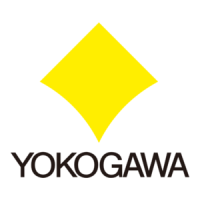1. Explosion Protection Instrumentation
1-2
TI 32S01J30-01E
1.2 Explosion Protection Construction
As described in 1.1, each country has its own standards and rules regarding technical methods
for explosion protection. To install ProSafe-RS/ProSafe-RS Lite in hazardous areas, NI, Ex
“ec”, and Type “n” regulations are adopted as explosion protection construction. The adoption
of NI, Ex “ec”, and Type “n” makes it possible to install ProSafe-RS/ProSafe-RS Lite in Division
2 or Zone 2 that covers most hazardous areas. This widens a more variety of instrumentation.
In addition, it makes it possible to connect to eld devices installed in Division 2 or Zone 2
hazardous area. (There are some restrictions.) With N-IO eld enclosure, NI, and Ex “ec”
are adopted as explosion protection construction for the installation of N-IO eld enclosure
in hazardous areas. The adoption of NI allows N-IO eld enclosure to be installed in Class II
hazardous area (Division 2 or Zone 2). To install ProSafe-RS/ProSafe-RS Lite equipment in a
hazardous area, the nodes and terminal boards as well as I/O modules should comply with the
standards. The gure below shows an example of NI compliant devices. The devices in shading
and the cables shown in heavy line are NI compliant products.
For NI compliant products, see Appendix 1.
Dec 3, 2021-00

